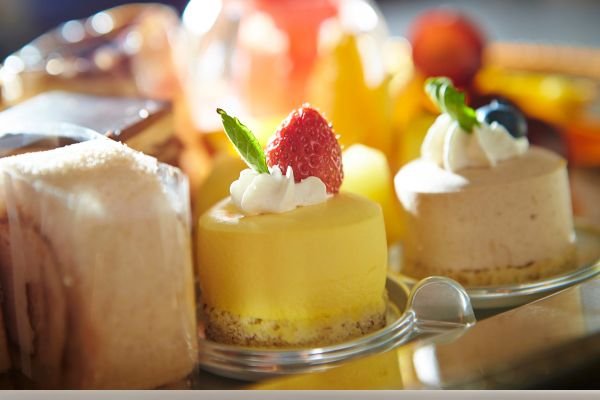Petit fours are delicate, bite-sized cakes that are often served at special occasions such as weddings, birthdays, and high tea. These elegant treats are not only delicious but also have a rich history.
The Origins of Petit Fours
The term “petit fours” is French and translates to “small oven.” These tiny cakes originated in France during the 18th century when pastry chefs began experimenting with creating miniature versions of their larger cakes.
They were initially known as “bonbons sec,” which means “dry sweets” in French. These miniature treats were made from leftover cake scraps and other ingredients such as nuts, fruit, and chocolate.
The Evolution of Petit Fours
During the 19th century, petit fours became more refined and elegant. Pastry chefs began to use more expensive ingredients such as marzipan, fondant, and royal icing to decorate the tiny cakes.
The shape and design of petit fours also evolved. They were often decorated with intricate designs and shapes such as flowers, butterflies, and other delicate motifs.
In the 20th century, petit fours became even more popular and were often served at fancy events such as weddings, formal dinners, and high tea.
They became a symbol of sophistication and luxury, and people would often compete to see who could create the most elaborate and beautiful petit fours.
Types of Petit Fours
There are many different types of petit fours, each with its own unique flavor and design. Here are some of the most popular types:
Glacé
Glacé petit fours are made by dipping the cake into a sweet glaze made from sugar, water, and flavorings. The glaze hardens, creating a sweet and crunchy exterior.
Buttercream
Buttercream petit fours are made by sandwiching layers of cake with buttercream frosting. The cake is then cut into small squares or rectangles and decorated with buttercream frosting.
Marzipan
Marzipan petit fours are made by covering the cake with a layer of marzipan. The marzipan is then decorated with royal icing or other edible decorations.
Fondant
Fondant petit fours are made by covering the cake with a layer of fondant. The fondant is then decorated with intricate designs and shapes using royal icing.
FAQs
“Petit fours” translates to “small oven” in English.
Some of the most popular types of petit fours include glacé, buttercream, marzipan, and fondant.
Petit fours became popular in the 19th century and were often served at formal events such as weddings and high tea.
Petit fours are often decorated with intricate designs such as flowers, butterflies, and other delicate motifs.
Buttercream petit fours are made by sandwiching layers of cake with buttercream frosting, while fondant petit fours are covered in a layer of fondant and decorated with royal icing.
Conclusion
Petit fours have come a long way since their humble beginnings as “bonbons sec” in 18th century France. Today, they are a symbol of elegance and sophistication and are often served at special occasions around the world.
With their delicate designs and delicious flavors, it’s no wonder that petit fours have become such a beloved dessert.

